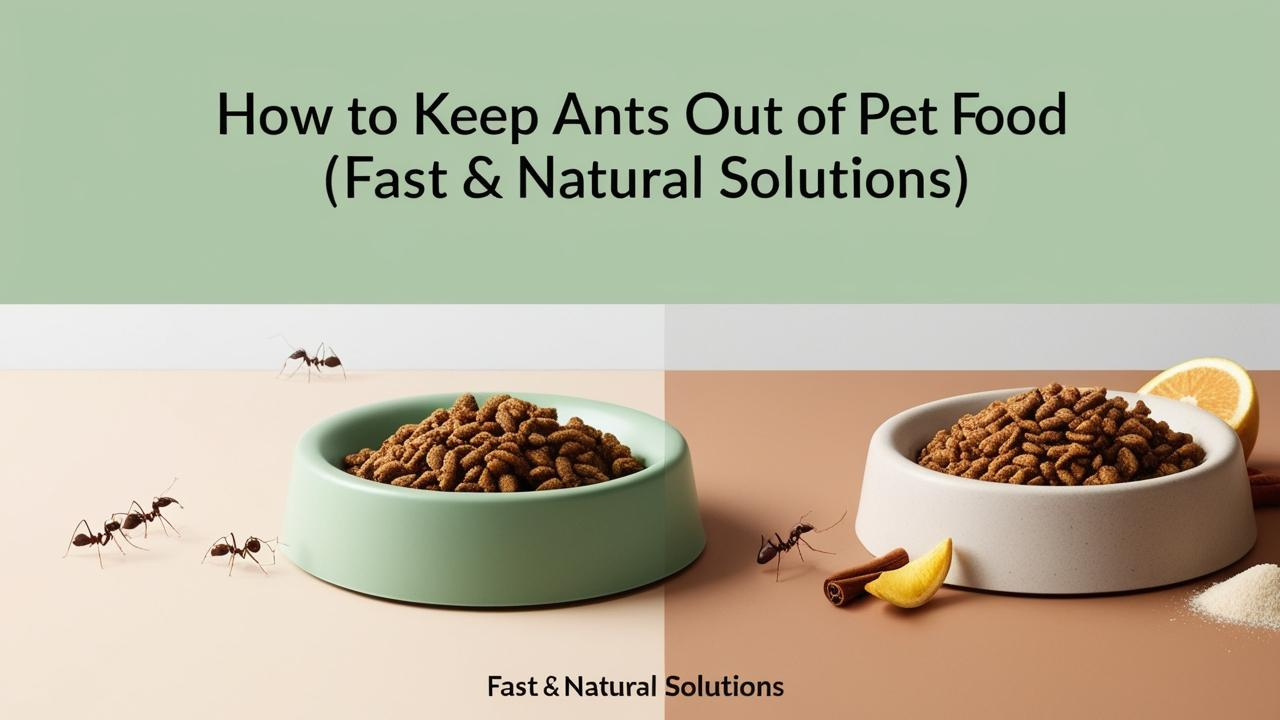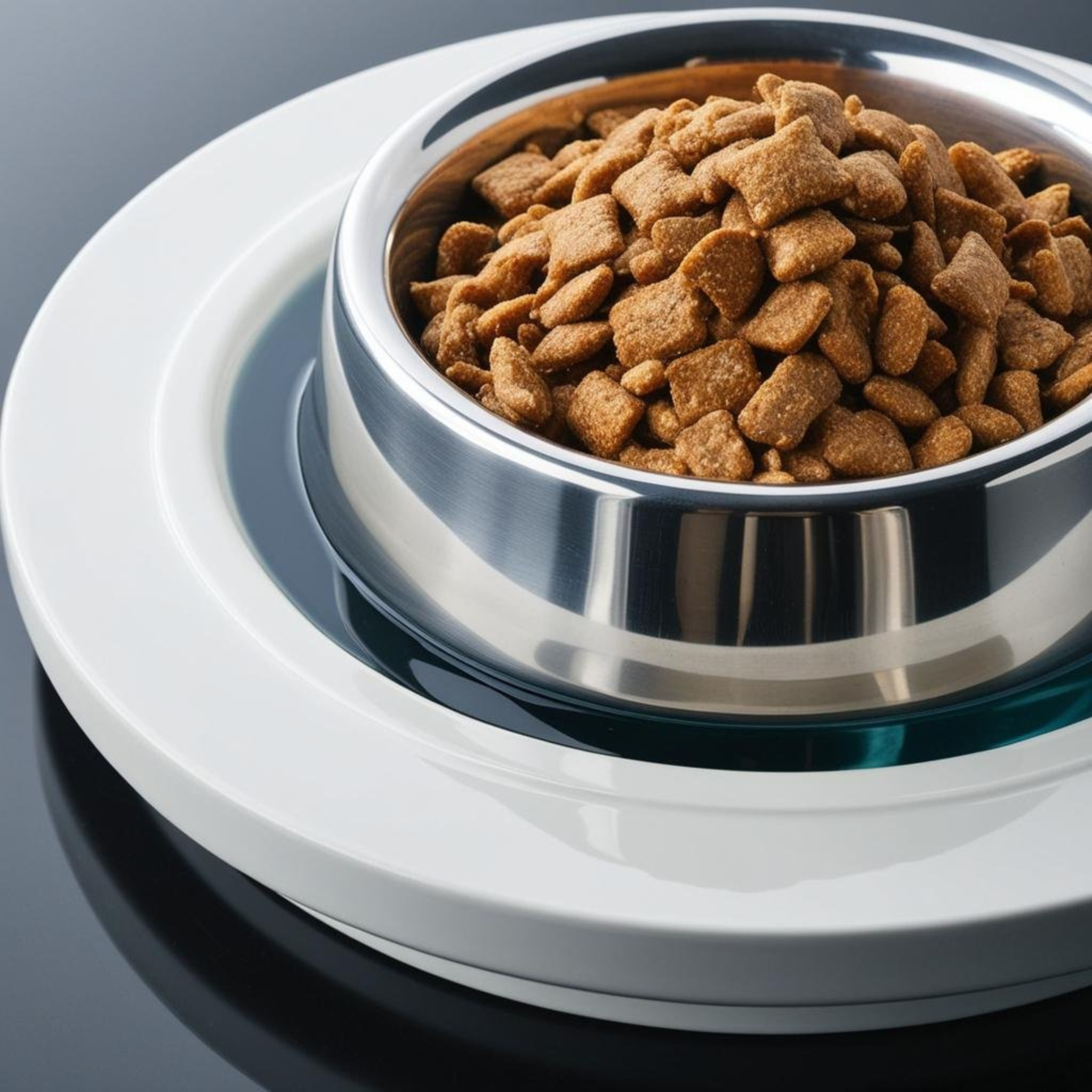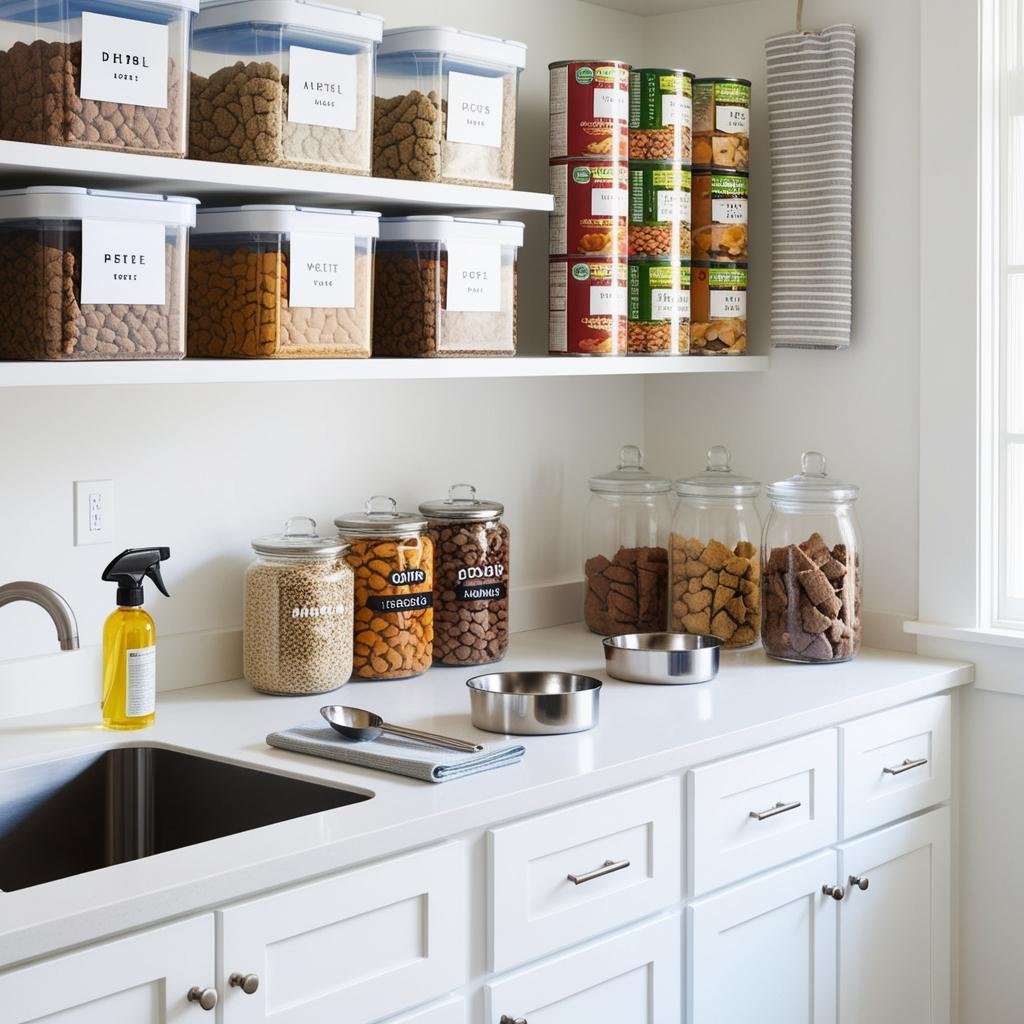
A Surprising Ant Repellent—Nutmeg
During a recent house sit, I went 10 days without seeing a single ant. Then one morning, they were swarming the dog’s food bowl.
I reached for a common kitchen spice—nutmeg—and sprinkled it around the bowl. The ants disappeared and never returned.
This trick worked for a friend too, making it an easy, natural solution to try.

Other Ways to Keep Ants Away from Pet Food
If you’re dealing with persistent ants, here are additional methods to protect your pet’s food:
1. Use a Moat Bowl
Place the food bowl inside a shallow dish filled with water—ants can’t swim. This simple trick helps prevent ants from reaching your pet’s food, especially during warmer months when they are more active. The water creates a barrier that ants cannot cross, ensuring your pet’s food stays clean and untouched. It’s an easy, non-toxic solution to keep pesky ants at bay while keeping your pet’s mealtime safe and enjoyable. Just be sure to check the water level regularly to maintain its effectiveness
2. Create a Physical Barrier
-
Chalk: Drawing a line around the food bowl with chalk can deter ants, as they dislike crossing the powdery substance. It’s a natural, safe, and non-toxic solution that works well for smaller areas.
-
Diatomaceous Earth: This fine, abrasive powder can be sprinkled around the base of the food bowl or along the feeding area. It works by damaging the exoskeletons of ants (and other pests), causing them to dehydrate and die. It’s safe for pets but should be used with care, ensuring your pet doesn’t ingest it directly.
-
Vaseline: Applying a thin layer of petroleum jelly around the edge of the food bowl or on the legs of a raised feeder creates a sticky barrier that ants can’t cross. This method is especially effective if you’re dealing with ants that are climbing up to the bowl, as they won’t be able to get past the slippery surface.


3. Elevate the Bowl
A raised bowl with petroleum jelly on the legs can stop ants in their tracks by preventing them from climbing up to the food. Ants are persistent creatures, but they often struggle to scale smooth, slippery surfaces. By coating the legs of the feeder with petroleum jelly, you create an impenetrable barrier that ants can’t cross. The jelly makes it nearly impossible for them to grip the surface, effectively keeping them away from the food.
This method works especially well for elevated feeders, as it eliminates the ants’ ability to climb up the legs and reach the bowl. The petroleum jelly serves as a physical barrier that remains effective for a while, but you’ll want to check periodically to make sure it hasn’t worn off or collected dust. It’s a simple and pet-safe solution, offering peace of mind when you’re dealing with ants during feeding time.
To ensure optimal effectiveness, use a generous amount of petroleum jelly on each leg and consider reapplying it every couple of weeks or after cleaning. This is an easy, low-maintenance way to keep your pet’s meals free from unwanted pests
4. Essential Oils
-
Essential oils are a natural and effective way to deter ants, as they dislike certain scents, including peppermint, citrus, and cinnamon. These essential oils act as a natural repellent, disrupting the ants’ scent trails and keeping them from finding their way to your pet’s food.
-
Peppermint: Ants are particularly repelled by the strong, minty aroma of peppermint. You can create a simple solution by diluting a few drops of peppermint essential oil in water and wiping down surfaces around the feeding area. This will disrupt the ants’ communication and discourage them from coming near the bowl.
-
Citrus: The fresh, zesty scent of citrus fruits like lemon, orange, or grapefruit is another scent that ants avoid. Citrus oils can be added to water to create a natural, fragrant deterrent. The acidity of the citrus oils also helps to cleanse surfaces, making it a great option for keeping the area fresh and free from pests.
-
Cinnamon: Ants can’t stand the strong, spicy scent of cinnamon either. Sprinkling ground cinnamon or using cinnamon essential oil in a diluted mix around the feeding area can create a natural boundary that ants will steer clear of.
-


5. Clean Up & Store Properly
To prevent ants and pests from invading your pet’s food, keep the feeding area clean and store food in airtight containers. A tidy environment reduces the chance of attracting insects, while proper storage keeps food fresh and safe for your pet.
-
Clean the Area Regularly: Ants are drawn to food crumbs, spills, and leftover pet food. After each meal, clean the area around the bowl and wash it to remove any lingering food traces that may attract ants.
-
Store Food in Airtight Containers: To prevent ants from smelling or accessing the food, always store pet food in airtight containers. Choose sealed plastic or glass containers to keep the food fresh and pest-free.
-
Tidy Up Food Scoops and Bags: Ensure food bags are securely closed, and regularly clean scoops. If you store food in bulk, transfer it to an airtight container to avoid attracting ants.
Maintaining a clean feeding area and storing food properly removes two major attractants—crumbs and exposed food—ensuring a pest-free feeding experience.
Conclusion: The Fastest, Easiest Fix? Nutmeg.
While several methods can help deter ants, nutmeg has proven to be one of the most effective and effortless solutions. This common kitchen spice has a strong scent that ants find repulsive, making it an ideal natural deterrent. Simply sprinkle a small amount of ground nutmeg around the perimeter of your pet’s food bowl or along ant trails, and you’ll notice a significant reduction in ant activity. The strong, aromatic compounds in nutmeg interfere with the ants’ ability to follow their scent trails, making it difficult for them to find and reach the food.
One of the advantages of using nutmeg is that it’s a completely natural solution, safe for pets and the environment. It’s a simple, low-cost fix that requires minimal effort, making it a great option for quick action against ants without the need for toxic chemicals or elaborate preparations.
If ants are a persistent problem in your home, this is a fast and easy way to handle the situation. Nutmeg’s effectiveness is especially helpful in areas like the kitchen or around pet feeding stations, where ants are most likely to invade. For ongoing prevention, consider reapplying the nutmeg as needed, especially during warmer months when ants are more active. This method is a no-fuss, natural way to ensure your pet’s meals remain ant-free, giving both you and your pet peace of mind.
